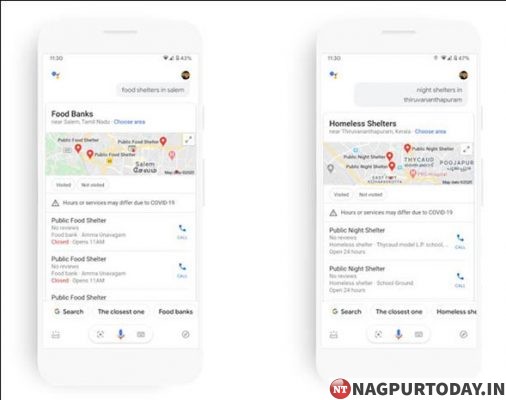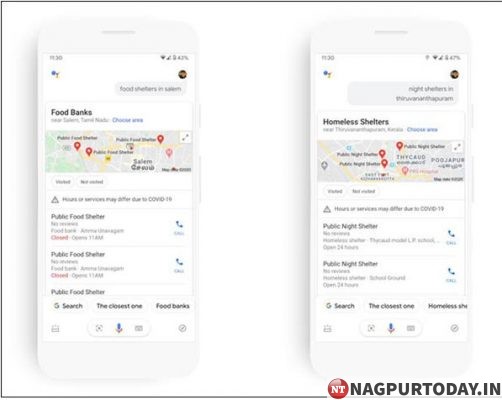Nagpur: : The COVID-19 pandemic has caused disruption to scores of people across cities, towns and villages, affecting things like livelihood and regular access to food. And with transport also being hit during the national lock-down, millions of migrant workers have started their journey from various cities across India towards their home, on foot. To help bring respite to people during this difficult time, Google Maps is now indicating the locations of food shelters and night shelters in cities across India.
Google is working closely with state and central government authorities to surface the locations of these relief centers. To date, across 30 cities, people can now find these locations on Google Maps, Search and Google Assistant by simply searching for ‘Food shelters in
People can also enter the above queries into Google Search, or ask their Google Assistant on smartphones or on a KaiOS device. Google is working to bring this to other Indian languages over the coming weeks, as well as adding additional shelters in more cities across the country.
In the coming days, it will become even easier to access this feature, with features like quick-access shortcuts that will appear beneath the search bar on the Google Maps app, shortcuts on Google Maps on KaiOS feature phones, and food and night shelter pins appearing on the map by default when the Maps app is first opened.
Commenting on the launch of the feature, Anal Ghosh, Sr. Program Manager, Google India, said, “As the COVID-19 situation develops, we are making a concerted effort to build solutions that help people during these times of need.
Highlighting the locations of food and night shelters on Google Maps is a step to make this information easily available to the users in need, and ensure they can avail the food and shelter services being provided by the government authorities. With the help of volunteers, NGOs, and traffic authorities, we hope to convey this important information to the affected people, many of whom may not have access to a smartphone or mobile device during this time.”
















